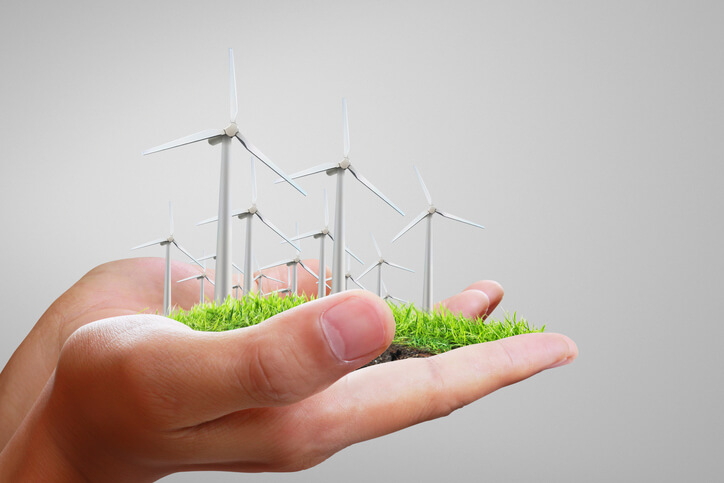American wind power’s future growth will be driven by a diverse range of customers and trends, says the American Wind Energy Association (AWEA), highlighting its WINDPOWER 2017 conference, which wrapped up in Anaheim, Calif., last week.
Stakeholders representing a corporate purchaser, deregulated utility, public utility commissioner and wind developer discussed a few of these trends during the closing general session panel.
“If you look at our panel, you have a developer, a utility, a regulator and a corporate purchaser,” said Rob Threlkeld, global manager of renewable energy for General Motors (GM). “There’s your message. We’re at the point where wind and solar have become mainstream technology.”
AWEA notes that GM has signed several long-term contracts for wind energy, including for supplying an assembly plant in Arlington, Texas, that makes 1,000 SUVs a day. The company has also committed to RE100 to source all of its global electric power from renewable sources by 2050. GM isn’t alone, as other Fortune 500 brands, including Amazon, Microsoft and Walmart, have all purchased wind energy, AWEA says.
“Look at GM’s supply chain – how many thousands of suppliers we have that are interested in renewable energy, as well,” Threlkeld added.
Buzz Miller, president and CEO of Southern Power, said, “By continuing to get cost-competitive [and] continuing to improve the wind energy product (it’s already great) you’ll capture a lot of potential customers out there – not only public utilities and corporate purchasers, but municipal utilities, rural co-ops and other entities.”
He added, “Whether it’s electric vehicles or renewables, what customers want will ultimately drive it.”
As explained by AWEA, expanding and upgrading the nation’s vital electric transmission infrastructure can help connect U.S. wind resources to load centers such as cities and factories. That will help save consumers money and boost the reliability and resiliency of the U.S. electricity supply, the association says.
“Wind can stay attractive. You fix some of the transmission issues around, keep vibrant and we can get through [the PTC phase-out],” noted Miller.
According to AWEA, rapidly changing technology and falling costs have resulted in wind’s supplying over 5% of U.S. electricity and more than 20% of electricity in five states. Wind also supports over 100,000 American jobs. In turn, says AWEA, telling the story – how wind works for America – is more important than ever.
“We have massive room to grow in telling the story of wind power,” said Miller. “One of the greatest infrastructure successes is tied to the wind energy PTC, thousands of megawatts, billions of dollars of investment and the jobs that go with it.”
Last week, Tom Kiernan, AWEA’s CEO, also laid out 16 trends that will continue to buoy the industry beyond 2020, once the wind energy PTC completes its current phase-out.
Show organizers are also reflecting on success this year while looking ahead to WINDPOWER 2018, taking place May 7-10 in Chicago.
“WINDPOWER in Anaheim brought more action than ever to the show floor,” said Jana Adams, AWEA’s senior vice president of membership value and experience. “From the design of our exhibit space to the broadcasting of our general sessions and spotlight on new exhibitors, we’re maximizing opportunities to make connections and ink new deals.”
Attendee Neal Gyngard agreed: “The biggest thing out of this is to finally get to meet some of these people I’ve emailed with for years. You’re chatting with someone at WINDPOWER, and you realize they helped you get a torque wrench three years ago. And the reception at Angel Stadium, that was an awesome way to kick it off – so much fun.”




